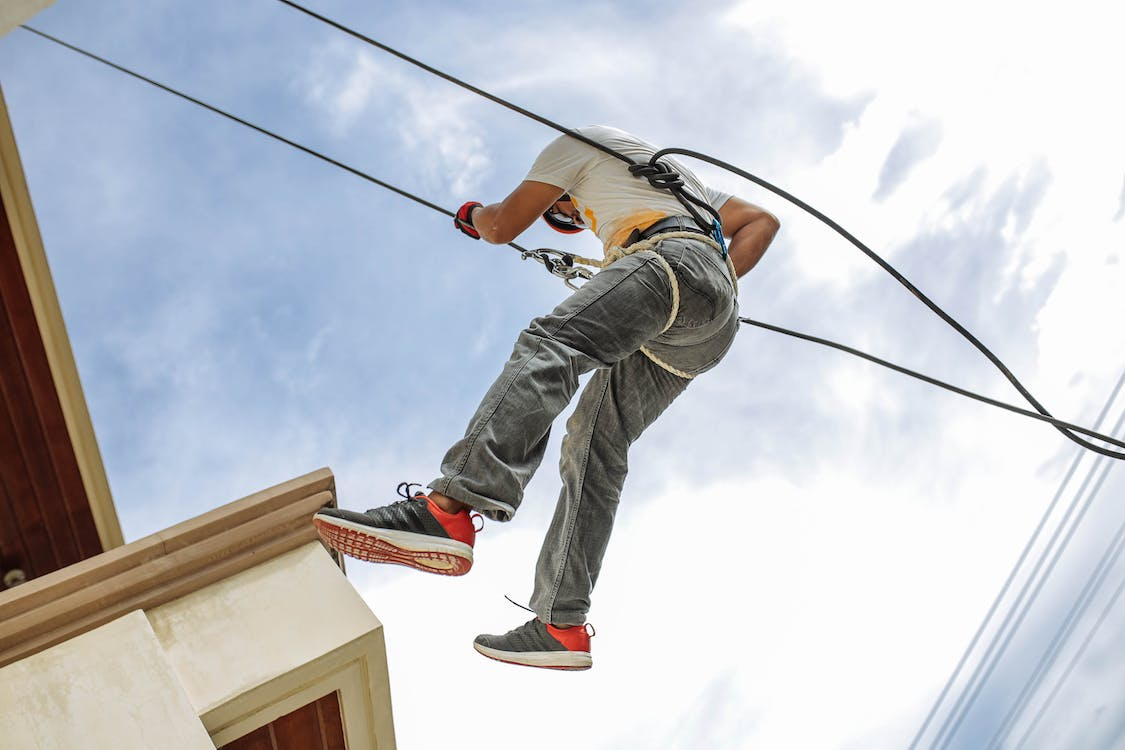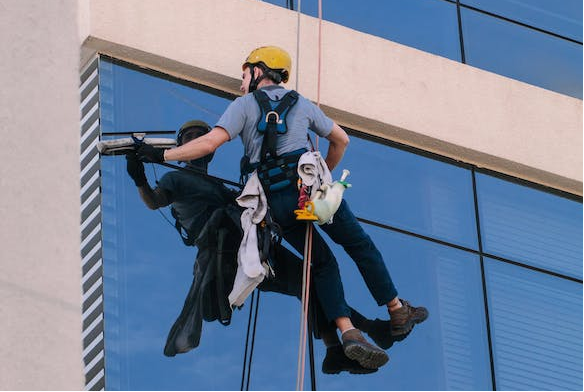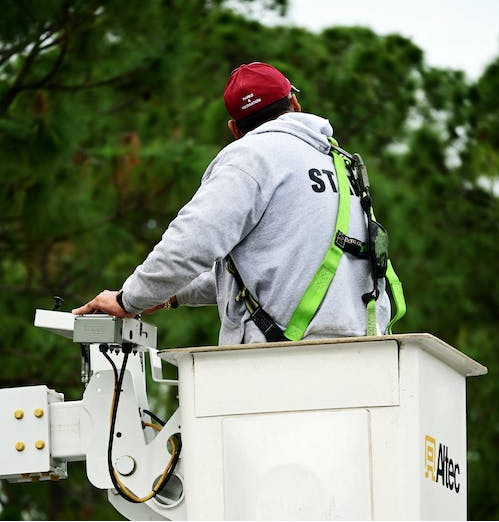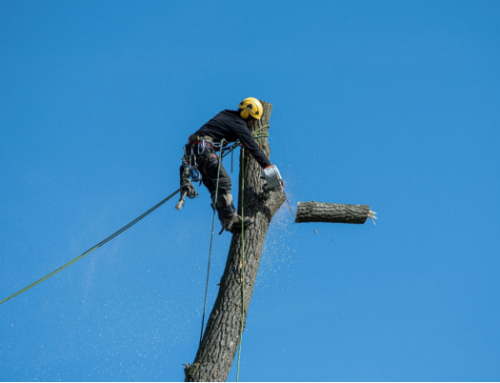When it comes to ensuring safety in industrial environments, particularly those involving heavy-duty tasks, mastering fall protection is paramount. From construction sites to manufacturing facilities, the risk of height-related accidents is a constant concern.
As a professional working in such industries across British Columbia, understanding the importance of fall protection and implementing effective strategies can be the difference between a secure workplace and a potential disaster.
In this blog, we’ll delve into the key steps for recognizing and preventing height-related hazards, equipping you with the knowledge you need to prioritize safety.
1. Understanding the Hierarchy of Fall Protection
In the realm of fall protection, knowledge is power. Understanding the hierarchy of fall protection is akin to having a roadmap that guides you through the intricacies of ensuring safety at heights. In our Fall Protection Training, we emphasize the importance of this hierarchy, as it categorizes fall protection measures into distinct levels, each tailored to specific circumstances.
Engineered Fall Protection, for instance, involves the use of engineered systems like guardrails and safety nets to prevent falls entirely. Fall Restraint aims to prevent workers from reaching a fall hazard, while Fall Arrest involves stopping a fall in progress.
Control Zones and Safety Monitors are additional layers of protection in certain situations. By grasping this hierarchy, you’ll be equipped to make informed decisions, select the most suitable fall protection measures for the task at hand, and ensure safety is never compromised.
2. Creating a Fall Protection Plan
A well-crafted Fall Protection Plan is the cornerstone of any safe workplace at heights. Our training takes you through the process of developing this plan in compliance with Part 11 of the Occupational Health and Safety Code.
You’ll not only understand your role as a worker, supervisor, or safety officer but also gain the practical know-how of when and how to implement Fall Protection Plans. We provide insights into finding the necessary resources, making the plan specific to your workplace, and ensuring it aligns with the unique challenges you face.
This plan isn’t just a document; it’s a living, breathing safety strategy that safeguards lives. By the end of our training, you’ll have the expertise to create a Fall Protection Plan that not only meets regulatory requirements but also effectively addresses the real-world fall hazards your team encounters daily.
3. Recognizing Potential Hazards with Scenarios
The ability to identify potential fall hazards is an invaluable skill that our Fall Protection Training instills in you through practical scenarios. These scenarios simulate real-world situations, immersing you in environments where fall risks lurk.
By actively engaging with these scenarios, you develop a keen eye for recognizing hazards before they escalate into accidents. Whether it’s spotting an unguarded edge, identifying a weak anchor point, or assessing the adequacy of fall protection measures, these scenarios provide hands-on experience.
This practical training aspect ensures that you not only understand the theoretical concepts but can also translate that knowledge into immediate, proactive action. You become the first line of defense, protecting yourself and your colleagues by identifying and mitigating potential fall hazards effectively.
4. Suspension Trauma and Swing Fall Hazards
Understanding the risks associated with suspension trauma and swing fall hazards is paramount when working at heights. Our comprehensive training delves into these dangers, ensuring you’re fully aware of their potential consequences and how to minimize them.
Suspension trauma, often overlooked, can lead to severe health issues if not addressed promptly. You’ll learn the importance of rapid response and rescue procedures to mitigate the effects of suspension trauma.
Swing falls, on the other hand, pose a unique set of challenges due to their uncontrolled nature. Our training equips you with strategies to prevent swing falls and safely recover if they occur. By comprehending these specific risks and knowing how to navigate them, you’re better prepared to handle the unexpected when working at heights, ensuring your safety remains paramount.
5. Equipment Safety and Inspection
Ensuring the safety and reliability of fall protection equipment is non-negotiable. You’ll gain in-depth knowledge about the minimum safety strength ratings of various equipment components during our training. Understanding these ratings is crucial, as it directly impacts the effectiveness of your fall protection system.
Anchors, guardrails, carabiners, lanyards, shock absorbers, rope grabs, and safety lifelines are all vital components in your safety arsenal. Our training guides you on how to select, inspect, and maintain these components to guarantee their optimal performance.
Regular equipment inspections become second nature, ensuring that your gear is free from defects, damage, or wear and tear. With your equipment in top shape, you can confidently focus on your tasks at heights, knowing that you’re protected by gear that meets the highest safety standards.
6. Proper Use of Safety Harnesses
Safety harnesses are your lifeline when working at heights. Donning and doffing harnesses correctly can be a lifesaver in the event of a fall. Our fall protection training imparts practical techniques for properly wearing and securing safety harnesses.
You’ll receive hands-on experience to ensure that you can efficiently and swiftly put on and remove this essential piece of fall protection equipment. Knowing how to use your harness effectively is not just about compliance; it’s about maximizing your safety and confidence when working at elevated positions.
By mastering the proper use of safety harnesses, you’re equipped with a fundamental skill that can mean the difference between a safe descent and a potentially hazardous fall.
7. Hands-On Skill Proficiencies
In the practical component of our course, you’ll have the opportunity to apply your knowledge in real-world scenarios. This hands-on experience covers a range of essential skills, including methods of suspension relief.
In the event of a fall, knowing how to free yourself and regain stability is vital. Our training ensures you’re well-versed in these techniques, enhancing your confidence and readiness to handle unexpected situations.
Additionally, you’ll become proficient in filling and reviewing documentation, including Fall Protection Plans and Equipment Logs. This attention to detail ensures that your fall protection strategies are meticulously documented, providing a clear record of your safety efforts.
8. Suitable for Various Professions
Our Fall Protection Training is designed to cater to a wide spectrum of professionals in construction, heavy industry, emergency response, and safety management.
Whether you’re a roofer working under the open sky, a framer crafting the structural backbone of a building, a scaffold worker navigating intricate heights, or an iron worker shaping the framework of industrial projects, our training is tailored to your specific needs.
We also welcome construction safety officers and site medics, as safety expertise is integral to their roles. Our diverse training ensures that regardless of your profession, you’re equipped with the skills and knowledge necessary to address fall protection effectively.
At Metro Safety Training, your safety is our paramount concern. We acknowledge the inherent risks associated with working at heights, and our certified trainers are dedicated to imparting the knowledge and skills needed to protect yourself and your colleagues.
Our location in Coquitlam, British Columbia, ensures accessibility to workers in Vancouver and the Fraser Valley. In addition to our Fall Protection Training, we also offer Confined Space Safety Trainingfor those of you who work in silos, boiler rooms, and other areas that qualify as confined spaces.
Don’t compromise on safety—give us a call today, and let’s transform your workplace into a truly secure environment where safety isn’t just a goal; it’s a way of life!









